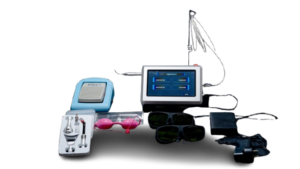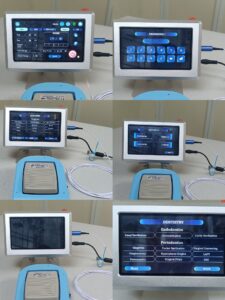Introduction
The integration of laser technology in outpatient departments (OPDs) is no longer a luxury—it’s becoming a standard for modern, efficient, and patient-friendly care. As India witnesses a shift toward minimally invasive treatments across disciplines like dermatology, dentistry, ENT, gynecology, and orthopedics, many clinics and hospitals are now exploring laser-based procedures for better clinical outcomes and patient satisfaction.
This blog outlines the key considerations for Indian doctors planning to build or upgrade their OPDs with laser capabilities.
Why Invest in a Laser-Equipped OPD?
1. Enhanced Patient Care and Comfort
Lasers enable procedures that are less painful, require minimal anesthesia, and lead to quicker recovery. This greatly enhances patient experience—especially in sensitive specialties like proctology, dermatology, and dental surgery.
2. Minimally Invasive Solutions
For many conditions (like anal fissures, varicose veins, or disc herniation), lasers offer a tissue-preserving, scar-free alternative to conventional surgery. This is especially relevant in rural and semi-urban areas where patients are hesitant to undergo surgical procedures.
3. Faster Turnaround & OPD Efficiency
Laser treatments typically require less time per procedure, allowing you to treat more patients in a day—enhancing both care and revenue.

Essential Equipment & Planning
1. Choose the Right Laser Technology
Not all lasers are created equal. Select the device based on your specialty:
- Dentists – Soft tissue diode lasers, dental lasers for root canal sterilization, whitening
- ENT Surgeons – CO2 lasers or diode lasers for turbinate reduction and tonsillectomy
- Proctologists & General Surgeons – 1470 nm radial fiber lasers for piles, fissures
- Gynecologists – Er:YAG or diode lasers for procedures like endometriosis, vaginal rejuvenation
- Orthopedic Specialists – High-intensity Class IV therapeutic lasers
2. Infrastructure Requirements
You don’t need to revamp your clinic. A laser OPD can be integrated into existing setups with minor modifications:
- Dedicated laser room or well-ventilated space
- Power backup & safety signage
- Laser safety goggles & trained support staff
3. Training & Certification
Proper training is essential to ensure safe, effective use of lasers. Choose suppliers who provide hands-on training and post-installation clinical support.
Regulatory & Safety Considerations
1. Compliance with Medical Guidelines
Ensure your device is approved by CDSCO or follows international certifications (like CE or US FDA).
2. Laser Safety Protocols
Implement standard safety measures:
- Protective eyewear
- Controlled access to laser treatment area
- Clearly defined SOPs for all procedures
Return on Investment (ROI)
A laser-equipped OPD can deliver a high ROI through:
- Increased patient footfall
- Ability to offer premium, cash-based procedures
- Reduction in procedure time and staff workload
- Improved patient retention and referrals
Example:
A general surgeon offering laser treatments for hemorrhoids can charge 2-3x more than conventional surgery, with reduced patient hospitalization—making it attractive for both doctor and patient.

Real Success Stories from India
Doctors across India—from Tier-1 cities to smaller towns—are adopting laser technologies:
- A dentist in Bhopal increased patient footfall by 40% after installing a dental laser
- A gynecologist in Raipur reduced OT dependency for minor procedures
- ENT clinics in Punjab reported faster recovery rates in sinus patients
Equipping your OPD with laser technology is not just a futuristic move—it’s a practical, scalable, and patient-centric upgrade. Whether you’re a new-age clinic or a well-established hospital, investing in lasers will redefine your clinical outcomes and professional growth.


Comments